10 Modern Tools for Indiana Jones
Jeremy Hsu, Innovation News Daily
Source - http://www.technewsdaily.com/indiana-jones-countdown-2810/
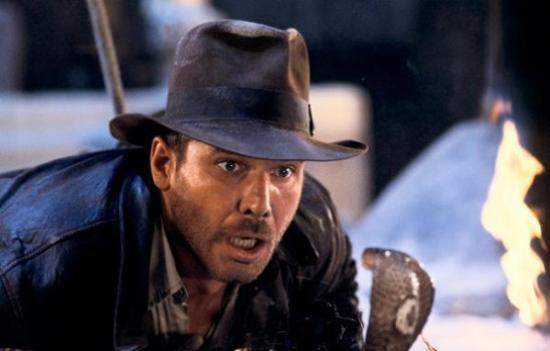
Credit: Lucasfilm
This isn't your dad's archaeology, Indiana Jones. It's not even your breathless brand of chasing down wondrous relics and brawling with Nazi stooges. Today's archaeologists can search for buried ancient cities from space, fly laser-toting airplanes over the sites to map them in 3-D, and see what lies beneath the ground by using radar and other special instruments.
That's all before a single trowel begins excavating. Once the digging has uncovered samples from artifacts or bones, it's off to the lab for some radiocarbon dating, perhaps some CT imaging scans and possibly even DNA testing of biological remains.
But don't worry, Indy, you don't belong in a museum just yet. Read on to see the new tools in the archaeologist's arsenal.
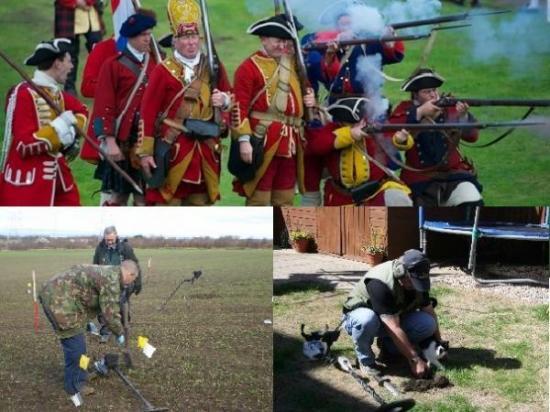
Credit: Battle of Prestonpans [1745] Heritage Trust/Centre for Battlefield Archaeology
Metal Detectors
Nothing beats a metal detector when searching for musket balls, bullets and belt buckles below the ground of an old battlefield. The technology first came into its own during World War II following Indiana Jones' main adventures, but has since become a staple tool of the subfield known as battlefield archaeology. That's not surprising when considering how much metal ends up on battlefields ranging from Little Big Horn to Agincourt.
Still, many archaeologists often have a love-hate relationship with metal detectors. That's because of hobbyists or amateur treasure hunters who use the device to find and dig up artifacts as historical keepsakes, or even to sell them on eBay.
Crafty archaeologists such as Tony Pollard, director of the Centre for Battlefield Archaeology at the University of Glasgow in Scotland, have reached out to cooperate with hobbyists. Metal detectors have become incredibly sophisticated since the originals designed for detecting battlefield mines, and some hobbyists can even tell what an object is before a trowel is put in the ground.
"If they're collecting bullets from a Civil War battlefield or buttons and sticking them in a jam jar in the garage, it's lost to us," Pollard said. "But if the location is recorded and we can match them to certain sites, we can understand the historical significance."
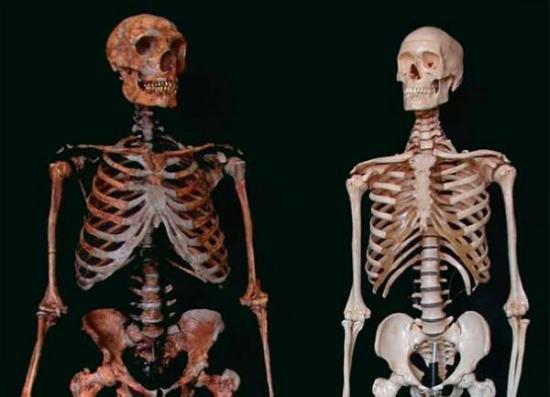
A comparison of Neanderthal and modern human skeletons. Credit: Photo: K. Mowbray, Reconstruction: G. Sawyer and B. Maley, Copyright: Ian Tattersall
Radiocarbon Dating
New technologies have revolutionized how archaeologists look at time. Indiana Jones of the 1930s never enjoyed the luxury of radiocarbon dating; a technique developed in 1949 that can estimate the age of carbon-containing objects to within about 200 years. Its pioneer, Willard Libby, won the 1960 Nobel Prize in Chemistry for developing the method that allows archaeologists to pin a rough date on biological artifacts.
The dating method looks for traces of naturally occurring carbon 14, which is an unstable form of carbon that decays by half its amount every 5,730 years. It doesn't work for objects more than 50,000 or 60,000 years old, but can give rough estimates of age within a 200-year range. Archaeologists rely upon it heavily, and can fine-tune the date by using methods such as counting tree rings.
"By giving us the ability to see the dating, it has really changed our view of deep time," said David Hurst Thomas, a curator in anthropology at the American Museum of Natural History in New York.
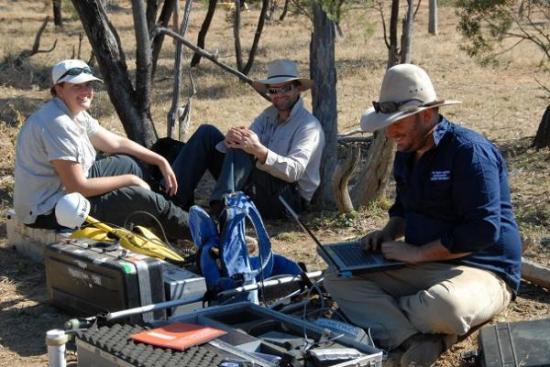
Credit: Ian Moffat/ Australian National University
Digital Archaeology
Computers may seem like an obvious tool for any science nowadays, but archaeologists such as David Hurst Thomas at the American Museum of Natural History in New York remember when computers had not yet ushered in the Digital Age. For his doctoral thesis in 1971, he wrote a program that represented a computer simulation capable of predicting artifact deposits from Shoshone Indians who had lived in Nevada.
Much has changed since Thomas wrote his computer simulation on punch cards that stored digital information for early computers. Archaeological labs use computers to process the latest 3-D scans or radar surveys of ancient sites, and archaeologists carry laptops or tablets into the field on digs. Virtual modeling has begun to digitally recreate ancient cities such as Pompeii in Italy.
Even the computing power and extra features packed into smartphones could help, said Tony Pollard, director of the Centre for Battlefield Archaeology at the University of Glasgow in Scotland.
"You've got mobile phones with camera and video and GPS and access to Internet," he said. "I'm pretty sure the mobile phone will become a tool for archaeologists."
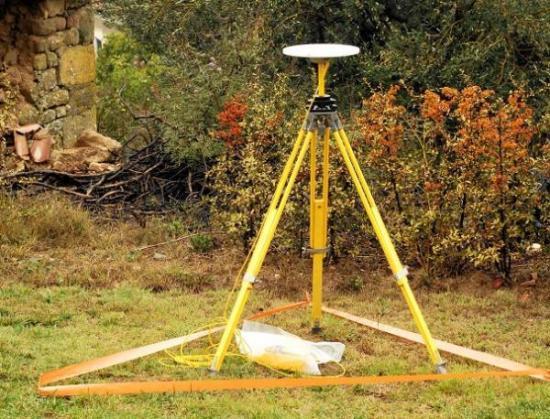
A Differentiated GPS base station helps map the trenches on the World War I battlefield of Gallipoli in Turkey. Credit: Australian Department of Veterans' Affairs
GPS Devices
The location-finding services of GPS have become standard kit for archaeologists who want to pinpoint artifacts, buildings or features at an excavation site. That has allowed archaeologists from Australia, New Zealand and Turkey to begin surveying World War I trenches at the Gallipoli battlefield in Turkey.
GPS figures out locations on Earth by comparing time differences between signals sent from satellites that make up the Global Positioning Service network. But the precision of the typical GPS used in cars and smartphones can be off by as much as 66 feet (20 meters) in some cases. Archaeologists at Gallipoli have boosted the accuracy by installing fixed ground stations that can help correct any satellite signal inaccuracies.
"Differential GPS is much more expensive than normal GPS, going from a few hundred dollars to tens of thousands of dollars," said Tony Pollard, director of the Centre for Battlefield Archaeology at the University of Glasgow in Scotland. "But it's increasingly replacing the more old-fashioned GPS for doing archaeology."
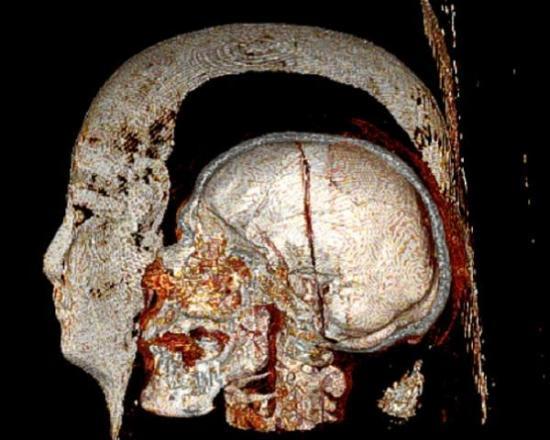
The ancient Egyptian mummy Djeher as imaged with a CT scanner. Djeher was found to have heart artery and other vascular disease. Credit: Dr. Michael Miyamoto
Medical Scans & DNA Tests
Even a 3,500 year-old Egyptian princess or an Italian Renaissance woman can still get medical scans and DNA testing in the name of archaeology. Technologies that originated in the hands of medical technicians now help analyze the lifestyles and even identities of individuals found at archaeological digs.
Researchers used computerized tomography (CT) scans to spot hardened arteries that may have led to heart disease in ancient Egyptian mummies. The evidence even showed blocked arteries in the heart of the princess Ahmose-Meryet-Amon, who lived in Thebes between 1580 B.C. and 1550 B.C.
Another team of archaeologists aims to extract DNA from the skeletal remains of a woman found at a Florence convent in Italy. That may allow the group to identify the bones as belonging to Lisa Gherardini Del Giocondo, a woman who historians say could have served as the model for Leonardo da Vinci's "Mona Lisa."
PART.2